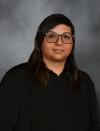By Paul Albert on July 26, 2011 - 9:59am

Last month an exhibit, George Papanicolaou, A Man of Science, was installed in the Weill Cornell Medical College main lobby at 1300 York Avenue.

Dr. George Papanicolaou (known as Dr. Pap) was born in 1883 in Kymi, a seaport city on the Greek island of Euboea. His parents were Nicholas, who was a local doctor, mayor, and senator, and his wife, Maria. In 1898, he enrolled at University of Athens where he studied humanities and music. (He was a violinist). After his undergraduate studies, he continued at the University's medical school, where he graduated in 1904. After graduation, he joined the military serving as an auxiliary nurse and assistant surgeon for two years. He returned briefly to Kymi to practice medicine but did not enjoy it. Since his real interest was biological sciences, in 1907, he went to Germany where he studied for his PhD at the Universities of Jena, Freiburg, and Munich, where he graduated in 1910. After his studies, he returned home to Greece. There he found that there were few opportunities for an academic career in biological research since Athens was the only university. Although his father wanted him to practice medicine, George had other dreams. At home in Kymi, he became reacquainted with Andromachi (Mary) Mavroyeni and after a brief courtship they married. Mary and George went to France with the hope of finding biological research opportunities. In the fall 1910, he visited the famed Oceanographic Museum in Monaco where he was offered a job the following January. Later in July 1911, he joined a marine research expedition in the Mediterranean Sea and Atlantic Ocean led by the Prince Albert of Monaco. In 1912-1913, Dr. Pap served in the Balkan War as a lieutenant medical officer. During the war, Dr. Pap met American volunteers who encouraged him to seek opportunities in America.
In 1913, Mary and George immigrated to America. They went to New York, where they both found work at Gimbels Department Store. Dr. T. H. Morgan from Columbia University was interested in Dr. Papanicolaou's research and assisted him in finding work as an assistant in the Department of Pathology at New York Hospital. In addition, he wrote zoological articles for the Greek, magazine, Atlantis. Through his colleagues at New York Hospital, he found employment as a research biologist in the Department of Anatomy at Cornell University Medical College. His wife Mary also got a job there and assisted him with his research.
Dr. Pap spent the next 47 years at Cornell University Medical College. He established the Papanicolaou Cytology Laboratory, where he conducted his pioneer research on the Pap Smear.In 1957, he retired as the professor of clinical anatomy at Cornell University Medical College but continued his research. That same year, he returned to Greece to pursue the possibility of establishing a cancer research institute in his home country. Although this did not come to fruition, The Cancer Institute of Miami offered him a director position and agreed to change their name to the Papanicolaou Cancer Research Institute. In 1961, George and Mary moved to Miami. Sadly a few months later, Dr. Pap died of a heart attacked on February 18, 1962.
Blog Category: Featured Stories




